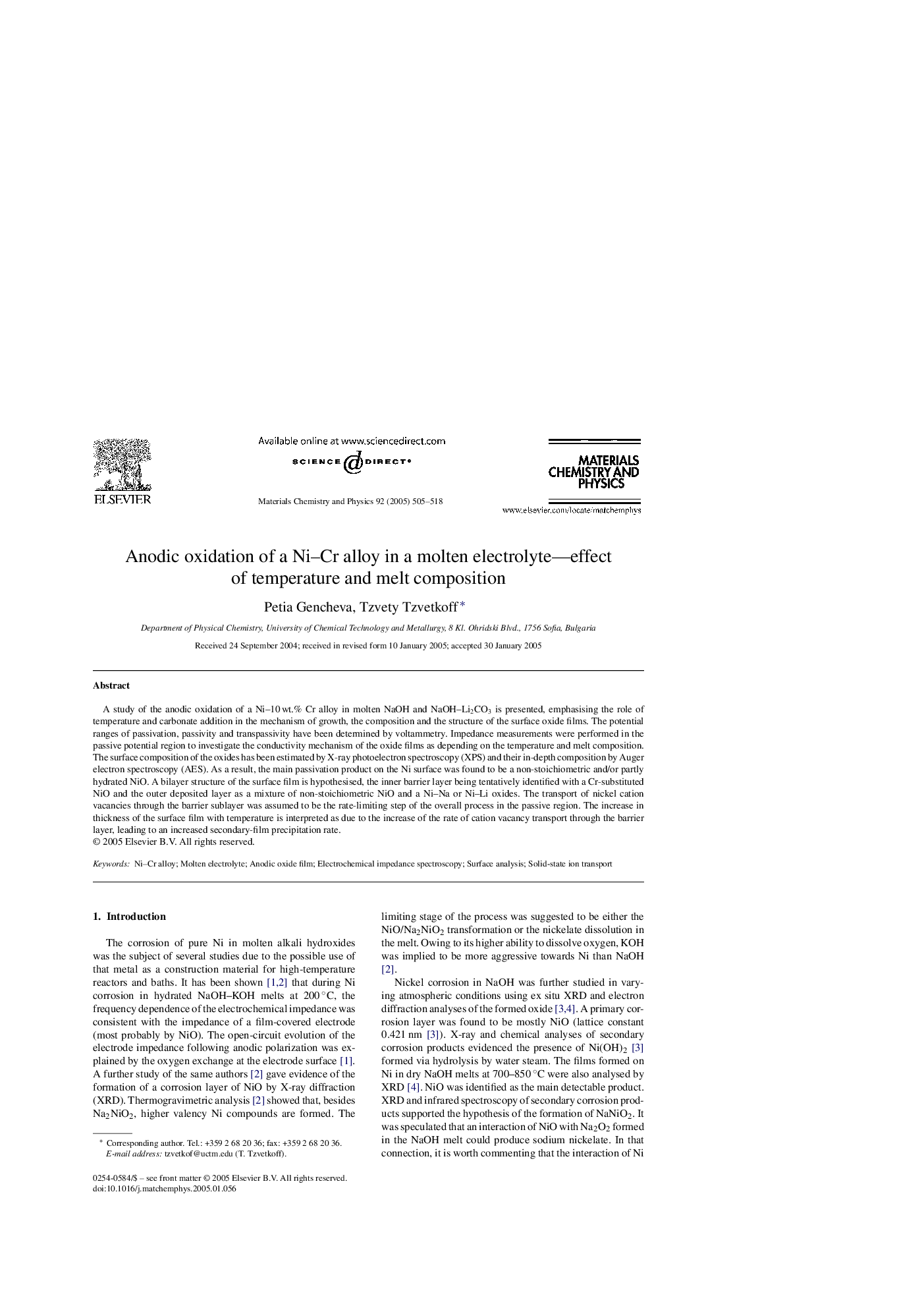| Article ID | Journal | Published Year | Pages | File Type |
|---|---|---|---|---|
| 9783066 | Materials Chemistry and Physics | 2005 | 14 Pages |
Abstract
A study of the anodic oxidation of a Ni-10Â wt.% Cr alloy in molten NaOH and NaOH-Li2CO3 is presented, emphasising the role of temperature and carbonate addition in the mechanism of growth, the composition and the structure of the surface oxide films. The potential ranges of passivation, passivity and transpassivity have been determined by voltammetry. Impedance measurements were performed in the passive potential region to investigate the conductivity mechanism of the oxide films as depending on the temperature and melt composition. The surface composition of the oxides has been estimated by X-ray photoelectron spectroscopy (XPS) and their in-depth composition by Auger electron spectroscopy (AES). As a result, the main passivation product on the Ni surface was found to be a non-stoichiometric and/or partly hydrated NiO. A bilayer structure of the surface film is hypothesised, the inner barrier layer being tentatively identified with a Cr-substituted NiO and the outer deposited layer as a mixture of non-stoichiometric NiO and a Ni-Na or Ni-Li oxides. The transport of nickel cation vacancies through the barrier sublayer was assumed to be the rate-limiting step of the overall process in the passive region. The increase in thickness of the surface film with temperature is interpreted as due to the increase of the rate of cation vacancy transport through the barrier layer, leading to an increased secondary-film precipitation rate.
Keywords
Related Topics
Physical Sciences and Engineering
Materials Science
Electronic, Optical and Magnetic Materials
Authors
Petia Gencheva, Tzvety Tzvetkoff,
